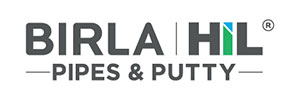Reverse osmosis Plants
Overview of Reverse Osmosis Plants
Reverse osmosis (RO) is a membrane-technology filtration method that removes many types of large molecules and ions from solutions by applying pressure to the solution, when it is on one side of a selective membrane. The result is that the solute is retained on the pressurized side of the membrane and the pure solvent is allowed to pass to the other side. To be “selective,” this membrane should not allow large molecules or ions through the pores (holes), but should allow smaller components of the solution (such as the solvent) to pass freely. Reverse osmosis is used to purify Water and remove salts and other impurities in order to improve the color, taste or properties of the fluid.

Frequently Asked Questions
An RO water plant separates water containing dissolved inorganic compounds into pure and ionized water. This process is commonly used in industry, but it can also be used in home applications. In industrial applications, the RO process can effectively purify up to 85% of water, with some restrictions. Unlike home units, industrial RO systems are not prone to scale formation, which can compromise the water quality.
The heart of an RO water plant is a semipermeable membrane, which filters out a range of contaminants, including bacteria, salts, and other organic materials. After treatment, the treated water goes through a post-filter, usually a carbon filter, to remove any remaining odors and tastes. Once treated, the water is released into the feed stream or stored in a tank under pressure.
The feedwater is injected into the RO membrane under high pressure. This pressure is necessary to overcome osmotic pressure, and contaminants and salts cannot pass through. The resulting permeate water (also known as product water) is filtered through another series of filtration units. A pressurized sand filter is used to remove suspended matter and turbidity. The RO membrane then filters the filtered water.
RO is a process that purifies drinking water. Its process is based on membranes made of non-porous polymeric films with very small openings. This type of filter can remove 99.99% of dissolved solids. It is also effective in removing bacteria, viruses, salts, and sugars from drinking waters. While a reverse osmosis system does an excellent job removing these contaminants, it is not a perfect solution.
RO water filters out dissolved minerals and organic substances that can affect the taste of food and beverages. It also prevents scale from forming on kitchen equipment, including coffee brewers and dishwashers. Hardness levels are measured in parts per million and milligrams per liter. In the U.S., lead contamination is one of the most serious health risks. While trace amounts of lead are not harmful, it is important to note that some drinking water contaminants are lethal, especially for children.
Public water supplies provide clean drinking water, but the water can still contain chemical compounds, bacteria, and waste products. While public water suppliers clean their water, they cannot guarantee it is 100 percent free of contaminants. During the disinfection process, the carbons will transfer electrons to the contaminates. The result is pure water that is safe to drink and use for cooking. However, the water should not be used in cooking.
An RO plant produces a high-quality, clean water stream from seawater. A water sample is submitted for analysis in a laboratory to determine its chemistry. Comprehensive water analysis provides metals and dissolved salts, pH levels, and total suspended solids. It also gives information on the potential biological activity of the water. Once the results are ready, the design can be finalized, and the installation of the RO plant can begin.
An RO plant has an advanced control system to reduce energy use, cost, and environmental impact. The membranes that the system uses remove 90 to 99% of contaminants. Typically, these membranes are flat sheets, or thin composites wound around a central collection tube. The membranes are then placed between the feed water and the main tank, which filters it. Generally, the RO process recovers 50% to 85% of the dissolved salts.
A RO plant can be operated using a control system, which helps reduce energy usage and costs. The membranes are made of porous polysulphone and are impermeable to dissolved salts. The membranes are typically made of flat sheets or thin composites. They consist of an active polyamide layer impermeable to dissolved salts and a porous polysulphone layer that is supportable and provides a barrier to particles.
The standard flow restrictor of a residential RO system generates a four to five-part waste stream to a one-part product stream. This is objectionable to many people, especially in drought and water scarcity. However, it is an essential component of the process, which you cannot reduce by limiting the amount of wastewater produced. This is because waste streams carry dissolved solids off the membrane.
While the discharge water from a domestic RO system is not suitable for drinking, it is ideal for many household uses. It can be used for car washing, gardening, or even animals. Attach a hose or a longer tubing to the wastewater and divert it to a larger tank. Saving water this way is an excellent way to stretch your dollar while reducing water consumption. In addition to helping the environment, reusing wastewater from a residential RO system can also be used for other purposes.
While most home RO systems produce a twenty-to-one wastewater ratio, municipal RO systems have improved upon this ratio. For instance, the Madison, Minnesota municipal system uses first-pass membranes and makes sure that four out of five gallons of water are released into the system. That’s a major improvement over the traditional system. If you are interested in upgrading your home’s water treatment, you can contact your local Water Supply Authority for more information.
RO water has several benefits. First of all, it filters out chemicals and pesticides that can harm your health. Then, it removes lead, the most common contaminant in U.S. drinking water. Lead is a mineral that gets into the water during pipe corrosion. Many children are positive for lead in various cities, including Flint. Even trace amounts of lead can be harmful to humans.
The other great benefit of reverse osmosis water is that it makes water taste better. If you’re on a low-sodium diet, you can use reverse osmosis water in your kitchen. This way, you’ll always have delicious and healthy water at your fingertips. This way, you can save money while cooking and drinking. Another added benefit of RO water is great for the environment.
One significant benefit of osmosis water is that it has no contaminants whatsoever, and this is a massive benefit for people on low-sodium diets and cancer patients. The other advantage is that you can use it in your cooking. In addition, osmosis water doesn’t contain harmful microbes and minerals. In addition, you can also use it for other purposes such as making tea and cooking.
Client testimonials
Our Clients
















